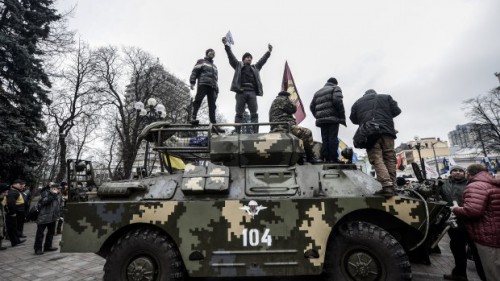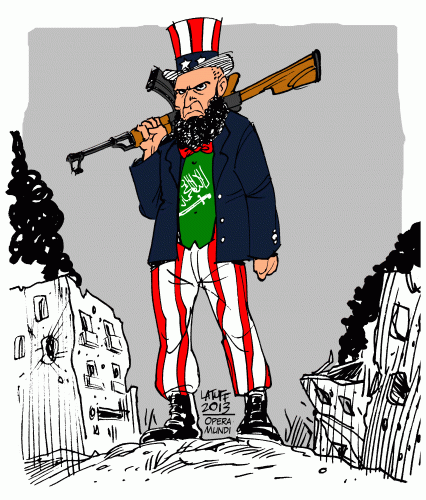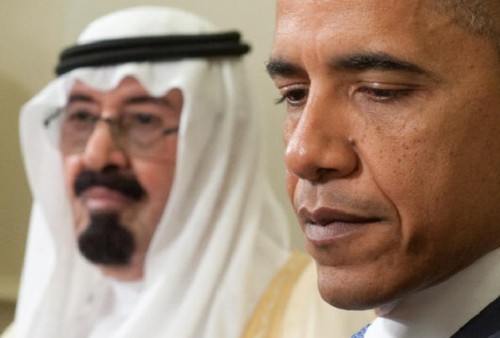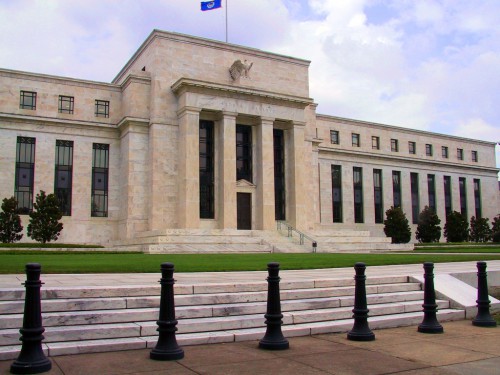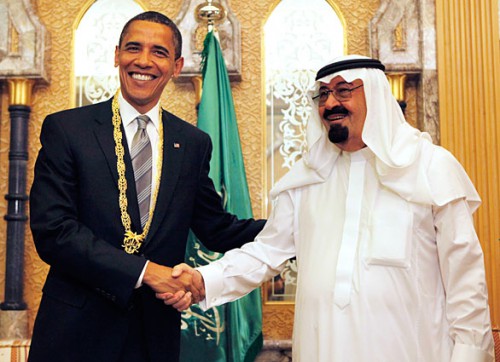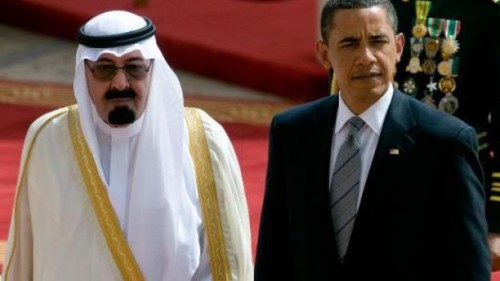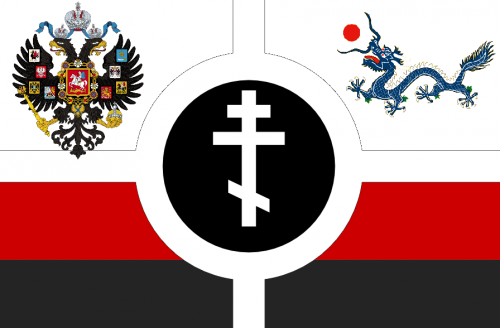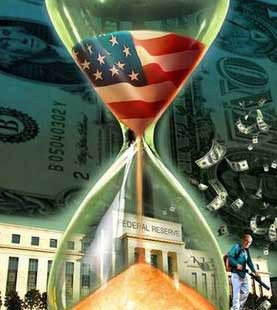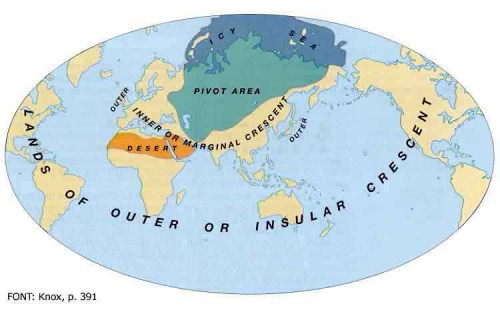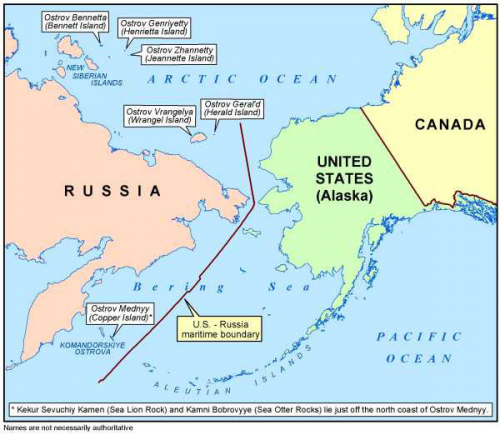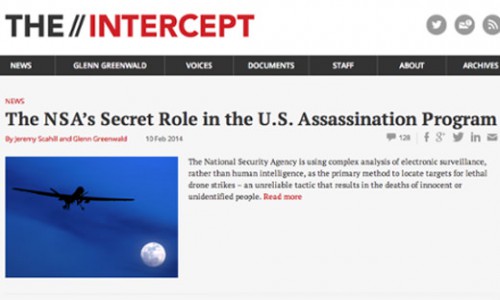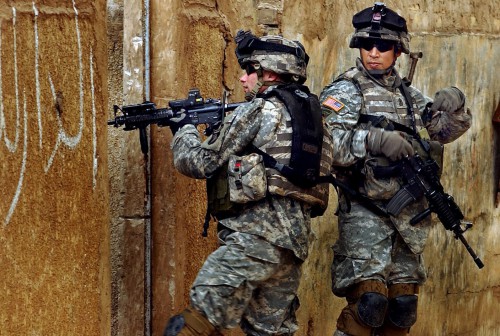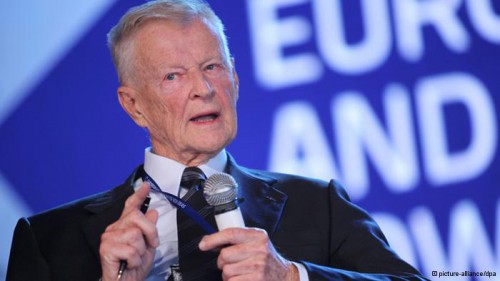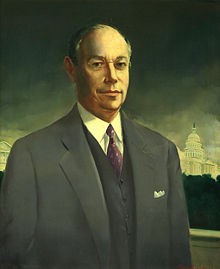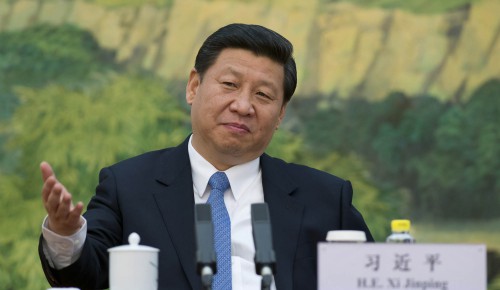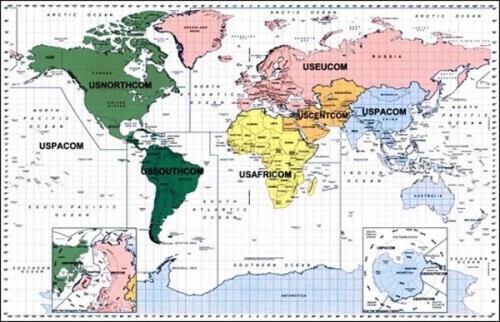En novembre 2004, l’État le plus pauvre des États-Unis, la Virginie-Occidentale, a réélu George W Bush avec plus de 56 % des suffrages. Depuis, il n’a cessé de soutenir les candidats républicains à la Maison Blanche. Pourtant, le New Deal avait sauvé la Virginie-Occidentale de la famine pendant les années 1930. L’États demeura un bastion démocrate jusqu’en 1980, au point de voter alors contre Ronald Reagan. Il reste encore aujourd’hui un fief du syndicat des mineurs et rappelle parfois que « Mother Jones », figure du mouvement ouvrier américain, s’y illustra. Alors, républicaine, la Virginie-Occidentale ? L’idée semblait aussi biscornue que d’imaginer des villes « rouges » comme Le Havre ou Sète « tombant » à droite. Justement, cette chute est déjà intervenue… Car cette histoire américaine n’est pas sans résonance en France.
Plutôt qu’en Virginie-Occidentale, Thomas Frank a enquêté dans son Kansas natal. La tradition populiste de gauche y fut aussi vive, mais sa disparition est plus ancienne. Là-bas, il a vu s’exaucer le rêve des conservateurs : une fraction de la classe ouvrière procure à ceux-ci les moyens politiques de démanteler les protections autrefois arrachées par le monde ouvrier. L’explication que Frank avance n’est pas seulement — pas strictement — religieuse ou « culturelle », liée au surgissement de questions susceptibles d’opposer deux fractions d’un même groupe social — qu’on pense, par exemple, à l’avortement, au mariage homosexuel, à la prière dans les écoles, à la peine de mort, à l’attachement aux armes à feu, à la pornographie, à la place des « minorités », à l’immigration, à la discrimination positive… Quand le mouvement ouvrier se défait, la liste de ces motifs de discorde s’allonge. Puis la vie politique et médiatique se recompose autour d’eux. La droite américaine n’a pas attendu Richard Nixon, Ronald Reagan, George W. Bush et le Tea Party pour découvrir l’usage qu’elle pourrait faire des sentiments traditionalistes, nationalistes ou simplement réactionnaires d’une fraction de l’électorat populaire. Y recourir lui semble d’autant plus avantageux qu’elle opère dans un pays où les élans socialistes sont demeurés contrariés et le sentiment de classe moins prononcé qu’ailleurs.
Frank éclaire un autre paradoxe, qui n’est pas spécifiquement américain, et qui l’est même de moins en moins. L’insécurité économique déchaînée par le nouveau capitalisme a conduit une partie du prolétariat et des classes moyennes à rechercher la sécurité ailleurs, dans un univers « moral » qui, lui, ne bougerait pas trop, voire qui réhabiliterait des comportements anciens, plus familiers. Ces cols bleus ou ces cols blancs votent alors pour les Républicains car les architectes de la révolution libérale et de l’instabilité sociale qui en découle ont eu l’habileté de mettre en avant leur conservatisme sur le terrain des « valeurs ». Parfois, leur sincérité n’est pas en cause : on peut spéculer sur les fonds de pension les plus « innovants » tout en s’opposant à l’avortement. La droite gagne alors sur les deux tableaux, le « traditionnel » et le « libéral ». L’aspiration au retour à l’ordre (social, racial, sexuel, moral) s’accroît au rythme de la déstabilisation induite par ses « réformes » économiques. Les conquêtes ouvrières que le capitalisme doit refouler en prétextant la concurrence internationale sont présentées comme autant de reliquats d’une ère révolue. Voire d’un droit à la paresse, à la fraude, à l’« assistanat », à l’immoralité d’une culture trop accommodante envers les corporatismes et les « avantages acquis ». La concurrence avec la Chine ou avec l’Inde (hier, avec le Japon ou l’Allemagne) impose que la jouissance cède le pas au sacrifice. Haro donc sur ceux qui ont dénaturé la « valeur travail » ! En France, un homme politique de premier plan imputa à l’« esprit de Mai 68 » un grief de ce genre. Il est devenu président de la République. Et il aspire à le redevenir.
Outre-Atlantique, la dimension religieuse a propulsé le ressentiment conservateur davantage qu’en Europe. Elle a procuré à la droite américaine nombre de recrues dans l’électorat populaire, lesquelles ont ensuite conforté l’assise de masse d’un parti républicain soumis à l’emprise croissante des ultralibéraux et des fondamentalistes chrétiens. Dès la fin des années i960, on observe ce mouvement de politisation de la foi. En janvier 1973, quand l’arrêt « Roe vs Wade » de la Cour suprême légalise l’avor-tement, des millions de fidèles, jusqu’alors peu soucieux d’engagement politique et électoral, plongent dans la mêlée. Leurs convictions les plus sacrées ont été bafouées ? L’État et les tribunaux qui ont autorisé cela sont instantanément frappés d’illégitimité. Pour laver l’affront, les religieux s’emploieront à tout reconquérir, à tout convertir : Maison-Blanche, Congrès, gouvernement des États, tribunaux, médias. Il leur faudra chasser les mauvais juges de la Cour suprême, imposer de meilleures lois, plus vertueuses, élire des chefs d’État qui proclameront que la vie du fœtus est sacrée, imposer les « valeurs traditionnelles » aux studios de Hollywood, exiger davantage de commentateurs conservateurs dans les grands médias.
Mais comment ne pas voir alors que certaines des « plaies » incriminées par les traditionalistes — l’« hédonisme », la « pornographie » — sont alimentées par le divin marché ? C’est simple : depuis 1980, chacun des présidents républicains attribue la « faillite de la famille » à la décadence d’un État trop présent. En substituant son « humanisme laïc » à l’instruction et à l’assistance autrefois dispensées par les voisinages de quartier, les charités, les Églises, il aurait sapé l’autorité familiale, la moralité religieuse, les vertus civiques. L’ultralibéralisme a pu ainsi fusionner avec le puritanisme.
Si un tel registre n’est pas tout à fait transposable en France, Nicolas Sarkozy a néanmoins abordé lui aussi la question des valeurs et de la foi. Auteur en 2004 d’un livre titré La République, les religions, l’espérance, il y proclame d’emblée : « Je considère que, toutes ces dernières années, on a surestimé l’importance des questions sociologiques, tandis que le fait religieux, la question spirituelle ont été très largement sous-estimés. [...] Les fidèles des grands courants religieux [...] ne comprennent pas la tolérance naturelle de la société à l’endroit de toutes sortes de groupes ou d’appartenances ou de comportements minoritaires, et le sentiment de méfiance à l’endroit des religions. Ils vivent cette situation comme une injustice ! [...] Je crois au besoin de religieux pour la majorité des hommes et des femmes de notre siècle. [.] La religion catholique a joué un rôle en matière d’instruction civique et morale pendant des années, lié à la catéchèse qui existait dans tous les villages de France. Le catéchisme a doté des générations entières de citoyens d’un sens moral assez aiguisé. À l’époque, on recevait une éducation religieuse même dans les familles où on ne croyait pas. Cela permettait d’acquérir des valeurs qui comptaient pour l’équilibre de la société. [...] Maintenant que les lieux de culte officiels et publics sont si absents de nos banlieues, on mesure combien cet apport spirituel a pu être un facteur d’apaisement et quel vide il crée quand il disparaît. »
Des « comportements minoritaires » (de quoi parle-til ?) imprudemment tolérés par « toutes sortes de groupes » (à qui pense-t-il ?) pendant que la réflexion religieuse, porteuse de « valeurs », de « sens moral » et « d’apaisement » serait, elle, ignorée ou dédaignée : on ne sait trop s’il s’agissait, avec cet éloge de « la catéchèse », de rafraîchir les vieilles idées, bien françaises, de la Restauration (le sabre et le goupillon, le sacre et l’autel, les curés prêchant la soumission aux écoliers appelés à devenir de braves ouvriers tandis que des instituteurs « rouges » leur farcissaient le crâne avec le socialisme et la lutte de classe) ou si, plutôt, déjà « Sarko l’Américain » se dévoilait. Ami à la fois de Bolloré et des curés.
La droite américaine a toujours insisté sur le thème de la « responsabilité individuelle », du pionnier entreprenant et vertueux qui se fraie un chemin jusqu’aux rivages du Pacifique. Ce faisant, elle a pu stigmatiser, sans trop de mauvaise conscience, une population noire à la fois très dépendante des emplois publics et au sein de laquelle les familles monoparentales sont nombreuses, en général en raison de l’absence ou de l’incarcération du père. L’essor du conservatisme a ainsi lié réaffirmation religieuse, tempérance sexuelle, backlash racial, anti-étatisme et célébration d’un individu simultanément calculateur et éclairé par les enseignements de Dieu. Cherchant à expliquer ce qui rendit aux États-Unis cet attelage libéral-autoritaire moins instable qu’on ne l’imagine, l’historien Christopher Lasch suggéra qu’aux yeux des Républicains une lutte opposait la « classe » des producteurs privés et celle des intellectuels publics, la seconde cherchant à accroître son emprise sur le mariage, la sexualité et l’éducation des enfants de la même manière qu’elle avait étendu ses contrôles sur l’entreprise. L’un des principaux mérites de Thomas Frank est de nous aider à comprendre la convergence de ces griefs qu’on pourrait juger contradictoires. Et, chemin faisant, de nous éclairer sur l’identité, les ressorts, les tourments et le dévouement militant du petit peuple conservateur sans jamais recourir au registre du mépris que privilégient spontanément tant d’intellectuels ou de journalistes à l’encontre de quiconque ne relève ni de leur classe, ni de leur culture, ni de leur opinion. Conjugué à une écriture empreinte d’ironie et qui récuse le prêchi-prêcha, ce genre d’« intelligence avec l’ennemi » donne au livre son charme et sa portée.
Une réaction conservatrice découle en général d’une appréciation plus pessimiste des capacités de progrès collectif. Au cours des années i960, les États-Unis imaginaient qu’ils sauraient combattre le communisme sur le terrain de l’exemplarité sociale — d’où les volontaires du Peace Corps (Corps de la Paix) chargés par John Kennedy d’éduquer et de soigner les peuples du tiers-monde ; d’où aussi la « guerre contre la pauvreté » que le Président Johnson déclenche quelques années plus tard. La superpuissance américaine entrevoyait également qu’elle pourrait abolir la peine de mort et dépeupler ses prisons en proposant aux délinquants des programmes de soins, de formation, de travail salarié, d’éducation, de désintoxication. L’État est alors réputé pouvoir tout faire. Il avait surmonté la crise de 1929, vaincu le fascisme ; il saurait reconstruire les taudis, conquérir la Lune, améliorer la santé et le niveau de vie de chaque Américain, garantir le plein emploi. Peu à peu, le désenchantement apparaît, la croyance dans le progrès se délite, la crise s’installe. À la fin des années i960, la concurrence internationale et la peur du déclassement transforment un populisme de gauche (rooseveltien, optimiste, conquérant, égalitaire, aspirant au désir partagé de vivre mieux) en un « populisme » de droite faisant son miel de la crainte de millions d’ouvriers et d’employés de ne plus pouvoir tenir leur rang, d’être rattrapés par plus déshérités qu’eux. Les « eaux glacées du calcul égoïste » submergent les utopies publiques héritées du New Deal. Pour le parti démocrate, associé au pouvoir gouvernemental et syndical, le retour de bâton est brutal. D’autant que la question de l’insécurité resurgit dans ce contexte. Elle va progressivement embourgeoiser l’identité de la gauche, perçue comme trop angélique, efféminée, laxiste, intellectuelle, et prolétariser celle de la droite, jugée plus déterminée, plus masculine, moins « naïve ».
Cette métamorphose s’accomplit à mesure que les ghettos s’enflamment, que l’inflation resurgit, que le dollar baisse, que les usines ferment, que la criminalité s’amplifie et que l’« élite », jadis associée aux possédants, aux grandes familles de l’industrie et de la banque, devient identifiée à une « nouvelle gauche » exagérément friande d’innovations sociales, sexuelles, sociétales et raciales. La perte d’influence du mouvement ouvrier au sein du parti démocrate et l’ascendant corrélatif d’une bourgeoisie néolibérale cosmopolite et cultivée n’arrangent rien. Les médias conservateurs, en plein essor, n’ont plus qu’à déchaîner leur truculence contre une oligarchie radical-chic au parler exsangue et technocratique, lovée dans de belles résidences des États côtiers, touriste dans son propre pays, protégée d’une insécurité qu’elle conteste avec l’insouciance de ceux que cette violence épargne. Au reste, n’est-elle pas entretenue dans ses aveuglements par une ménagerie d’avocats procéduriers, de juges laxistes, d’intellectuels jargonnants, d’artistes blasphémateurs et autres boucs émissaires rêvés du ressentiment populaire ? « Progressistes en limousine » là-bas ; « gauche caviar » chez nous.
Nicolas Sarkozy aime les États-Unis et il apprécie qu’on le sache. Dans son discours du 7 novembre 2007 devant le Congrès, il a évoqué avec une émotion qui n’était pas entièrement factice la conquête de l’Ouest, Elvis Presley, John Wayne, Charlton Heston. Il aurait dû citer Richard Nixon, Ronald Reagan et George W Bush tant son élection, inspirée des recettes de la droite américaine, n’aurait pas été concevable sans le basculement à droite d’une fraction des catégories populaires autrefois acquises à la gauche. Car ceux des châtelains de Sologne qui ont sablé le champagne le soir de sa victoire n’ont pu le faire que grâce au renfort électoral des ouvriers de Charleville-Mézières, lesquels furent sans doute moins sensibles à la promesse d’un « bouclier fiscal » qu’aux homélies de l’ancien maire de Neuilly sur « la France qui souffre », celle « qui se lève tôt » et qui aime l’« industrie ».
Quiconque passe en revue les éléments les plus dis-tinctifs du discours de la droite française y retrouve l’accent mis sur le déclin national, la décadence morale ; la lancinante musique destinée à préparer les esprits à une thérapie de choc libérale (la « rupture ») ; le combat contre une « pensée unique de gauche » qu’on accuse d’avoir enkysté l’économie et atrophié le débat public ; le réarmement intellectuel « gramscien » d’une droite « décomplexée » ; la redéfinition de la question sociale de manière à ce que la ligne de clivage n’oppose plus riches et pauvres, capital et travail, mais deux fractions du « prolétariat » entre elles, celle qui « n’en peut plus de faire des efforts » et la « république de l’assistanat » ; la mobilisation d’un petit peuple conservateur dont on se prétend l’expression persécutée ; le volontarisme politique, enfin, face à une élite gouvernante qui aurait baissé les bras. Presque tous ces ingrédients ont déjà été accommodés dans le Kansas de Thomas Frank.
Un homme à poigne s’impose plus naturellement quand le désordre s’empare de la vieille maison. En 1968, Nixon rode un discours glorifiant la « majorité silencieuse » qui n’accepte plus de voir son pays devenir la proie du chaos. Deux assassinats politiques (Martin Luther King, Robert Kennedy) viennent d’avoir lieu et, après le traumatisme des émeutes de Watts (Los Angeles) en août 1965 (trente-quatre morts et mille blessés), des répliques sont intervenues à Detroit en juillet 1967, puis à Chicago et à Harlem. Nixon invite ses compatriotes à écouter « une autre voix, une voix tranquille dans le tumulte des cris. C’est la voix de la grande majorité des Américains, les Américains oubliés, ceux qui ne crient pas, ceux qui ne manifestent pas. Ils ne sont ni racistes ni malades. Ils ne sont pas coupables des fléaux qui infestent notre pays ». Deux ans plus tôt, en 1966, un certain Ronald Reagan s’était fait élire gouverneur de Californie en détachant les « petits Blancs » d’un parti démocrate dont il avait pourfendu le manque de fermeté face à des étudiants contestataires opposés à la fois à la guerre du Vietnam, à la police et à la moralité « bourgeoise » — laquelle ne se distinguait pas toujours de la moralité ouvrière.
Les soulèvements urbains, les « désordres » dans les campus procurèrent ainsi à la droite américaine l’occasion de se « prolétariser » sans bourse délier. Un peu à la manière de Nixon, Nicolas Sarkozy s’est employé à dresser la « majorité silencieuse » des petits contribuables qui « n’en peuvent plus » contre une jeunesse à ses yeux dépourvue du sens de la reconnaissance. Mais, dans son cas, il ne s’agissait plus de vilipender l’ingratitude des petits bourgeois chevelus d’autrefois ; sa cible ne relevait ni de la même classe ni des mêmes quartiers : « La vérité, c’est que, depuis quarante ans, on a mis en place une stratégie erronée pour les banlieues. D’une certaine manière, plus on a consacré de moyens à la politique de la ville, moins on a obtenu de résultats. » Le 18 décembre 2006, dans les Ardennes, le ministre de l’Intérieur d’alors précisa son propos. Il salua « la France qui croit au mérite et à l’effort, la France dure à la peine, la France dont on ne parle jamais parce qu’elle ne se plaint pas, parce qu’elle ne brûle pas de voitures — cela ne se fait pas ici de casser ce que l’on a payé si cher —, parce qu’elle ne bloque pas les trains. La France qui en a assez que l’on parle en son nom ». « Les Américains qui ne crient pas », disait Nixon ; « la France qui ne se plaint pas », répond Sarkozy.
Entre 1969 et 2005, la droite américaine aura occupé la Maison-Blanche vingt-quatre années sur trente-six. De 1995 à 2005, elle a également contrôlé les deux chambres du Congrès et les gouvernements de la plupart des États. La Cour suprême est entre ses mains depuis très longtemps. Malgré cela, Frank insiste sur ce point, les conservateurs jouent aux persécutés. Plus la droite domine, plus elle se prétend dominée, anxieuse de « rupture » avec le statu quo. Car, à ses yeux, le « politiquement correct », c’est toujours les autres. Tant que demeurera un petit journal de gauche, un universitaire qui quelque part enseigne Keynes, Marx ou Picasso, les États-Unis resteront décriés comme une caserne soviétique. La rancœur fait carburer la locomotive conservatrice ; c’est, toujours en avant, jamais content. Symbole de la petite bourgeoisie provinciale, Nixon se jugeait méprisé par la dynastie des Kennedy et par les grands médias. George W Bush (études à Yale puis à Harvard, fils de Président et petit-fils de sénateur) s’est perçu lui aussi comme un rebelle, un petit Texan teigneux et mal embouché, égaré dans un monde de snobs façonnés par le New York Times.
Et Nicolas Sarkozy ? Avions-nous mesuré à quel point il fut vilipendé lui aussi ? Maire à vingt-neuf ans d’une ville richissime, tour à tour ministre du Budget, de la Communication, numéro deux du gouvernement, responsable de la police, grand argentier, président du parti majoritaire, avocat d’affaires, ami constant des milliardaires qui possèdent les médias (et qui produisent des programmes célébrant la police, l’argent et les nouveaux riches), il a énormément souffert du mépris des « élites »! « Depuis 2002, a-t-il précisé, je me suis construit en marge d’un système qui ne voulait pas de moi comme président de l’UMP, qui récusait mes idées comme ministre de l’Intérieur et qui contestait mes propositions. » Cinq ans après le début de ce purgatoire, au cours d’un meeting auquel participaient des proscrits aussi notoires que Valéry Giscard d’Estaing et Jean-Pierre Raffarin, il lança à ses petits camarades : « Dans cette campagne, j’ai voulu m’adresser à la France exaspérée, à cette France qui souffre, à laquelle personne ne parlait plus, sauf les extrêmes. Et le miracle s’est produit. Le peuple a répondu. Le peuple s’est levé. Il a choisi et ce n’est pas conforme à la pensée unique. Maintenant, on veut le faire rasseoir. Eh bien moi, je veux être le candidat du peuple, le porte-parole du peuple, de tous ceux qui en ont assez qu’on les mette de côté. » Le lendemain, il précisait à des ouvriers de l’usine Vallourec : « C’est vous qui choisirez le président de la République. Ce n’est pas les élites, les sondages, les journalistes. S’ils s’y mettent si nombreux pour m’empêcher, c’est qu’ils ont compris qu’une fois le train passé il sera trop tard. » Il est trop tard, et les « élites » se terrent.
C’est là une vieille recette de la droite : pour ne pas avoir à s’étendre sur la question des intérêts (économiques) — ce qui est sage quand on défend ceux d’une minorité de la population —, il faut se montrer intarissable sur le thème des valeurs, de la « culture » et des postures : ordre, autorité, travail, mérite, moralité, famille. La manœuvre est d’autant plus naturelle que la gauche, terrorisée à l’idée qu’on pourrait la taxer de « populisme », refuse de désigner ses adversaires, à supposer qu’elle en conserve un seul en dehors du racisme et de la méchanceté. Pour le parti démocrate, la peur de faire peur — c’est-à-dire en vérité celle d’être vraiment de gauche — devint paralysante à un moment où, de son côté, la droite ne montrait aucune retenue, aucun « complexe » de ce genre. Un jour, François Hollande, qui n’avait pas employé le mot « ouvrier » une seule fois dans sa motion adoptée par les militants lors du congrès de Dijon (2003), laissa échapper que les socialistes français s’en prendraient peut-être aux « riches ». Il se garda de récidiver devant le hourvari qui s’ensuivit. Demeurent donc les valeurs pour feindre de se distinguer encore. En débattre sans relâche a permis à la gauche libérale de maquiller son accord avec la droite conservatrice sur les dossiers de la mondialisation ou des rapports avec le patronat — « les entrepreneurs ». Mais cela a offert aux conservateurs l’occasion d’installer la discorde au sein des catégories populaires, en général plus partagées sur les questions de morale et de discipline que sur la nécessité d’un bon salaire. Au total, qui y a gagné ? Dans le Kansas de Thomas Frank, on connaît la réponse.
Ailleurs aussi parfois. Le 29 avril 2007 à Paris, devant une foule qui bramait son plaisir, Nicolas Sarkozy pourfendit avec gourmandise un grand moment d’épouvante survenu près de quarante ans plus tôt : « Ils avaient proclamé que tout était permis, que l’autorité c’était fini, que la politesse c’était fini, que le respect c’était fini, qu’il n’y avait plus rien de grand, plus rien de sacré, plus rien d’admirable, plus de règle, plus de norme, plus d’interdit. [...] Voyez comment l’héritage de Mai 68 a liquidé l’école de Jules Ferry, [...] introduit le cynisme dans la société et dans la politique, [.] contribué à affaiblir la morale du capitalisme, [.] préparé le triomphe du prédateur sur l’entrepreneur, du spéculateur sur le travailleur. [...] Cette gauche héritière de Mai 68 qui est dans la politique, dans les médias, dans l’administration, dans l’économie, [.] qui trouve des excuses aux voyous, [...] condamne la France à un immobilisme dont les travailleurs, dont les plus modestes, les plus pauvres, ceux qui souffrent déjà seraient les principales victimes. [.] La crise du travail est d’abord une crise morale dans laquelle l’héritage de Mai 68 porte une lourde responsabilité. [...] Écoutez-les, les héritiers de Mai 68 qui cultivent la repentance, qui font l’apologie du communautarisme, qui dénigrent l’identité nationale, qui attisent la haine de la famille, de la société, de l’État, de la nation, de la République. [...] Je veux tourner la page de Mai 68. » En privilégiant dès les années i960 « les couleurs vives aux tons pastel », Reagan avait anticipé le discours de combat de Sarkozy, mais aussi ceux de Berlusconi et de Thatcher et contredit tous ces politologues qui ne conçoivent la conquête du pouvoir que comme une éternelle course au centre. Les Républicains proposèrent « un choix, pas un écho ». Ne plus redouter son ombre, voilà une idée dont la gauche gagnerait à s’inspirer.
Le succès de la droite en terrain populaire ne s’explique pas uniquement par la pugnacité ou par le talent de ses porte-parole. Aux États-Unis, comme en France, elle profita de transformations sociologiques et anthropologiques, en particulier d’un affaiblissement des collectifs ouvriers et militants qui a conduit nombre d’électeurs aux revenus modestes à vivre leur rapport à la politique et à la société sur un mode plus individualiste, plus calculateur. Le discours du « choix », du « mérite », de la « valeur travail » les a ciblés. Ils veulent choisir (leur école, leur quartier) pour ne pas devoir subir ce qu’il y a de pire ; ils estiment avoir du mérite et n’en être pas récompensés ; ils travaillent dur et gagnent peu, guère plus, estiment-ils, que les chômeurs et les immigrés. Les privilèges des riches leur semblent tellement inaccessibles qu’ils ne les concernent plus. À leurs yeux, la ligne de fracture économique passe moins entre privilégiés et pauvres, capitalistes et ouvriers, davantage entre salariés et « assistés », Blancs et « minorités », travailleurs et fraudeurs. Pendant les dix années qui précédèrent son accession à la Maison-Blanche, Reagan raconta ainsi l’histoire (fausse) d’une « reine de l’aide sociale [welfare queen] qui utilise quatre-vingts noms, trente adresses et douze cartes de sécurité sociale, grâce à quoi son revenu net d’impôt est supérieur à i50 000 dollars ». Il pourfendit également les fraudeurs paradant dans les supermarchés, se payant des « bouteilles de vodka » avec leurs allocations familiales et « achetant des T-bone steaks pendant que vous, vous attendez à la caisse avec votre paquet de viande hachée ». Un jour, Jacques Chirac se découvrit les mêmes talents de fabuliste : « Comment voulez-vous que le travailleur français qui travaille avec sa femme et qui, ensemble, gagnent environ 15 000 francs, et qui voit sur le palier à côté de son HLM, entassée, une famille avec un père de famille, trois ou quatre épouses, et une vingtaine de gosses, et qui gagne 50 000 francs de prestations sociales, sans naturellement travailler… Si vous ajoutez le bruit et l’odeur, eh bien, le travailleur français sur le palier devient fou. » Ce fameux « père de famille » touchant plus de 7 500 euros d’aides sociales par mois n’existait pas. Il ne coûtait donc rien à personne. Mais il rapporta très gros à quelques-uns.
Nicolas Sarkozy a refusé « que ceux qui ne veulent rien faire, que ceux qui ne veulent pas travailler vivent sur le dos de ceux qui se lèvent tôt et qui travaillent dur ». Il a opposé la France « qui se lève tôt » à celle des « assistés », jamais à celle des rentiers. Parfois, à l’américaine, il a ajouté une dimension ethnique et raciale à l’opposition entre catégories populaires dont il escomptait des dividendes électoraux. Ainsi, à Agen, le 22 juin 2006, ce passage d’un de ses discours lui valut sa plus longue ovation : « Et à ceux qui ont délibérément choisi de vivre du travail des autres, ceux qui pensent que tout leur est dû sans qu’eux-mêmes doivent rien à personne, ceux qui veulent tout tout de suite sans rien faire, ceux qui, au lieu de se donner du mal pour gagner leur vie, préfèrent chercher dans les replis de l’histoire une dette imaginaire que la France aurait contractée à leur égard et qu’à leurs yeux elle n’aurait pas réglée, ceux qui préfèrent attiser la surenchère des mémoires pour exiger une compensation que personne ne leur doit plutôt que de chercher à s’intégrer par l’effort et par le travail, ceux qui n’aiment pas la France, ceux qui exigent tout d’elle sans rien vouloir lui donner, je leur dis qu’ils ne sont pas obligés de demeurer sur le territoire national. » Indolence, assistance, récriminations et immigration se trouvaient ainsi mêlées. Un cocktail qui se révèle souvent très performant.
En juillet 2004, alors que Frank et moi roulions entre Washington et la Virginie-Occidentale, l’autoradio diffusait l’émission de Rush Limbaugh, écoutée par treize millions d’auditeurs. La campagne électorale battait son plein et l’animateur ultraconservateur y consacrait toute son attention, sa gouaille, sa férocité. Or, à l’entendre, quel était le sujet du jour ? Le fait que, quelques heures plus tôt dans un restaurant, l’épouse richissime du candidat démocrate John Kerry avait semblé ignorer l’existence d’un plat traditionnel américain. L’acte d’accusation de Limbaugh et des auditeurs à qui il avait choisi de donner la parole (ou de ne pas la retirer) fut tout trouvé : décidément, ces Démocrates n’étaient pas en phase avec le peuple, sa culture, sa cuisine. Et comment s’étonner ensuite que John Kerry — grande famille de la côte Est, études privées en Suisse, mariage avec une milliardaire, cinq résidences, un avion privé pour aller de l’une à l’autre, du snowboard en hiver, du windsurf en été, même son vélo valait 8 000 dollars — parle. français !
L’insistance que des idéologues conservateurs, aussi présents dans les médias que dans les églises, réservent à des manières d’être (ou des affectations) humbles, pieuses, simples, patriotiques — les leurs, bien entendu — est d’autant plus redoutable que la gauche, elle, paraît de plus en plus associée à l’expertise, à la morgue, au cosmopolitisme, au mépris du peuple. Le piège s’est alors refermé : en mettant en veilleuse les questions de classe, les Démocrates ont enflé les voiles d’un poujadisme culturel qui les a balayés. Au bout de la route, on trouve ce « dérangement » mental que Frank examine en même temps qu’il en procure les clefs : depuis 1980 aux États-Unis, des hommes politiques de droite, de Ronald Reagan à George W. Bush, ont obtenu le soutien de certains des groupes sociaux qui constituaient les cibles de leurs propositions économiques (ouvriers, employés, personnes âgées) en se réclamant des goûts et des traditions populaires. Pendant que le Président californien et son successeur texan offraient de plantureux abattements fiscaux aux riches, ils promettaient aux petits, aux obscurs et aux sans-grade le retour à l’ordre, au patriotisme, aux drapeaux qui flottent, aux couples qui se marient et aux jours de chasse avec grand-père.
Tout au long de sa campagne de 2007, Nicolas Sarkozy a évoqué les « travailleurs qui rentrent crevés », ceux qui « se trimbalent avec une dent qui manque ». Il a même écrit : « Dans les usines, on parle peu. Il y a chez les ouvriers une noblesse de sentiments qui s’exprime plus par des silences enveloppés dans une forme extrême de pudeur que par des mots. J’ai appris à les comprendre et j’ai l’impression qu’ils me comprennent. 3 » Cette connivence revendiquée avec la majorité des Français — téléspectateurs de Michel Drucker et fans de Johnny Hallyday mêlés — lui paraît d’autant plus naturelle que « Je ne suis pas un théoricien, je ne suis pas un idéologue, je ne suis pas un intellectuel, je suis quelqu’un de concret, un homme vivant, avec une famille, comme les autres 4 ». En face, soucieuse de mieux se fondre dans l’économie « post-industrielle » qu’affectionnent les lecteurs des Inrockuptibles et de Libération, de rassurer les petits bourgeois écologistes des villes qui dorénavant constituent le socle de son électorat, la gauche a choisi de purger son vocabulaire des mots « prolétariat » et « classe ouvrière ». Résultat, la droite les récupère : « Il y en a, s’amusa un jour Nicolas Sarkozy, qui sont dans un grand hôtel pour bavasser ensemble, ils discutent boutique et partis. Moi, mon hôtel, c’est l’usine, je suis au milieu des Français. [...] Les usines, c’est beau, il y a du bruit, ça vit, personne ne se sent seul, il y a les copains, la fraternité, c’est pas comme les bureaux. »
Pour un homme de droite, il est bien sûr avantageux de savoir dresser le prolétariat et les petites classes moyennes tantôt contre les « nantis » résidant à l’étage du dessus (employés avec statuts, syndicats et « régimes spéciaux ») ; tantôt contre les « assistés » relégués un peu plus loin ; ou contre les deux à la fois. Mais si cela ne suffit pas, l’anti-intellectualisme constitue une puissante arme de secours, qui peut permettre de conduire la politique du Medef avec les anciens électeurs de Georges Marchais. Quand Frank démonte ce stratagème, il se garde de le déplorer avec les airs d’un mondain de Manhattan. Il en éclaire les ressorts. Celui-ci par exemple : la mondialisation économique, qui a laminé les conditions d’existence des catégories sociales les plus mal dotées en capital culturel (diplômes, langues étrangères, etc.), semble au contraire avoir réservé ses bienfaits aux « manipulateurs de symboles » : essayistes, juristes, architectes, journalistes, financiers. Alors, quand ces derniers prétendent, en plus, dispenser aux autres des leçons d’ouverture, de tolérance, d’écologie et de vertu, la colère déferle.
Les Républicains, qui ont excellé à se présenter comme assiégés par une élite culturelle et savante, pouvaient-ils par conséquent rêver avoir des adversaires plus détestés ? L’isolement social de la plupart des intellectuels, des « experts », des artistes, leur individualisme, leur narcissisme, leur dédain des traditions populaires, leur mépris des « ploucs » éparpillés loin des côtes ont ainsi alimenté un ressentiment dont Fox News et le Tea Party firent leur pelote. En prenant pour cible principale l’élite de la culture, le populisme de droite a protégé l’élite de l’argent. Il n’y est parvenu que parce que la suffisance de ceux qui savent est devenue plus insupportable que l’impudence des possédants [1]. Et d’autres avocats des privilèges se sont engouffrés dans la brèche. Un jour qu’il ne s’entretenait ni avec Martin Bouygues, ni avec Bernard Arnault, ni avec Bernard-Henri Lévy, Nicolas Sarkozy confia à Paris Match : « Je suis comme la plupart des gens : j’aime ce qu’ils aiment. J’aime le Tour de France, le football, je vais voir Les Bronzés 3. J’aime écouter de la chanson populaire. »
Nicolas Sarkozy appréciait aussi les soirées du Fouquet’s, les yachts de Vincent Bolloré et la perspective de gagner énormément d’argent en enchaînant les conférences devant des publics de banquiers et d’industriels. Toutefois, quand on referme le livre de Thomas Frank, une interrogation surgit, qui déborde largement l’exposition des stratagèmes et des hypocrisies de la droite. Elle pourrait se résumer ainsi : le discours décharné et rabougri de la gauche, son empressement à se fondre dans l’ordre libéral planétaire (Pascal Lamy), son assimilation du marché à « l’air qu’on respire » (Ségolène Royal), sa proximité avec le monde du spectacle et de la frime (Jack Lang), sa réticence à évoquer la question de classes sous quelque forme que ce soit, sa peur du volontarisme politique, sa haine du conflit, enfin, tout cela n’aurait-il pas préparé le terrain à la victoire de ses adversaires ? Les éternels « rénovateurs » de la gauche ne semblent jamais s’inspirer de ce genre de questionnement, au contraire. Il n’existe pas de meilleure preuve de son urgence.
Serge Halimi
Extrait de Thomas Frank, Pourquoi les pauvres votent à droite ?, Editions Agone, 2013 (2008).
[1]Résultat : le vote républicain est corrélé à l’absence de diplôme au moins autant qu’au niveau élevé de revenu…






 del.icio.us
del.icio.us
 Digg
Digg
